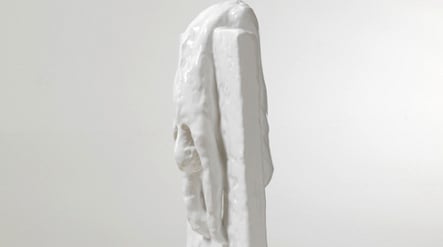Berlin is a city of monuments. Alongside a Stalinist monster in Treptower Park and a sensitive memorial to the gay and lesbian victims of the Nazis unveiled last year, more than fifty compete for the public’s attention in the German capital.
But then again, you can never have enough memories, right?
Berlin is currently processing the addition of a new public sculpture to its existing portfolio. On March 10, the first wave of a competition to design a strong-sounding “Freedom and Unity” memorial closed. Salomon Schindler, who is administering the project for the government, estimated that his office received some 500 different projects to commemorate the peaceful revolution in East Germany and the country’s reunification two decades ago.
Next a pre-selected jury composed of architects, academics, critics and politicians will narrow this number down to twenty. These will then go on display in both Berlin and online. After some sort of vague public discussion, the initial jury will make their final selection, choosing the winning project on November 9 – the 20th anniversary of the fall of the Iron Curtain. The winning artist will then proceed to celebrate having a budget up to €10 million to blow on his or her project.
But how to best memorialise abstract ideas like freedom and unity? This is a tough question. Fortunately enough for this topic, there is plenty of historical context at hand.
In the aftermath of the collapse of the communist east and the reunification of Germany, a number of similarly delicate issues lay at the heart of Berlin’s nineties rebuilding boom. The aim there was to somehow rebrand the new unified capital, to make it an architecturally cutting-edge, friendly, global metropolis neon-scrubbed of its darker stains.
The program was careful – and some would say, too careful – to avoid any hint of strong, powerful forms. The result was a castrated modern train station, a ridiculous Potsdamer Platz, and a hamster-wheeled Reichstag. And then the anodyne Chancellery, nicknamed the “washing machine” because of its blocky form, which actually isn’t as bad as everyone thinks.
Judging from recent events, this negative tendency has only gotten worse since the nineties, with the thundering dumbness of rebuilding the Prussian city palace to memorialise the pathetic for the benefit of posterity. But there may yet be sunshine in these half-hearted clouds!
The outstanding work of the past few years was also the boldest: Peter Eisenman’s Holocaust memorial is a solemn and sombre, and yet strangely magical zone. It welcomes lovers and street punks more readily than tourists in groups. The Holocaust Memorial re-imagined what a memorial could be, and showed how history could be experienced on an everyday basis constantly re-interpreted by each visitor.
Considering what it’s trying to commemorate, the judges in this new unity memorial competition should be equally bold, and think strongly about at least considering one of the strangest entries for the next round. I am referring to Ilya and Emilia Kabakov’s “The Eternal Emigrant.”
Designed by a husband-and-wife and team of émigré Russians, the sculpture shows a man splayed in two over a section of the Berlin Wall, like somebody struggling to open an umbrella in the wind.
What better design for freedom and unity could there be, than a design celebrating the heroism of the anguished and futile?



 Please whitelist us to continue reading.
Please whitelist us to continue reading.
Member comments